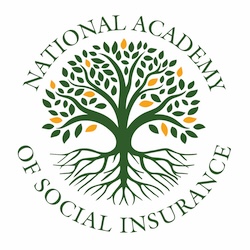Medicare Part D provides optional outpatient prescription drug coverage through private plans that contract with the federal government. In 2022, 49 million Medicare beneficiaries (about 75% of all Medicare beneficiaries) have drug coverage through Medicare (Cubanski and Damico, 2022).
Prescription Drug Plans
Beneficiaries in Part A and/or Part B can choose to receive their drug coverage by enrolling either in a stand-alone prescription drug plan (PDP) or in a Medicare Advantage plan that includes prescription drug coverage (MA-PD). Medicare regulates plan formularies, specifying what drugs must be covered within therapeutic classes. All private drug plans, including Part D PDPs and MA–PDs, must follow a standard coverage benefit structure or offer an actuarially equivalent plan, although plan sponsors may also offer enhanced benefit plans in addition to a standard PDP. Starting in 2022, enrollment in MA-PDs exceeded that of Part D PDPs.
Part D’s benefit design includes an annual deductible ($505 in 2023) and cost sharing liability (25%) until the catastrophic coverage threshold is reached. When Part D was first available, enrollees were exposed to a “coverage gap”—between an initial coverage limit and a catastrophic coverage threshold—in which they were required to pay 100% of prescription drug costs. This gap was eliminated by The Affordable Care Act (ACA) and The Bipartisan Budget Act of 2018.
The Inflation Reduction Act (IRA) lowered beneficiary costs further in Part D by placing a yearly cap on out-of-pocket prescription drug costs, starting in 2024. This change is expected to relieve financial pressures on individuals who rely heavily on high-cost prescription drugs.
Another IRA provision caps beneficiary expenses for insulin in 2023. Specifically, the imposed limits on monthly cost sharing for insulin products to $35 for Medicare beneficiaries (in Part D and Part B) and prohibits deductibles from applying to enrollees’ insulin expenses.
The IRA also provided Medicare with two key measures to lower drug prices in the program. First, the IRA requires Medicare to negotiate prices with drug companies for a limited number of brand-name drugs or biologics in Part D (starting in 2026) and Part B (starting in 2028) that meet certain requirements. The number of drugs subject to negotiation will increase over time and will be selected from among the drugs that account for the highest total Medicare spending in Part D and Part B. Second, the IRA requires that, starting in 2023, drug companies will begin paying rebates to Medicare if prices of their drugs (used by Medicare beneficiaries) rise faster than inflation. These changes are all intended to lower drug costs for Medicare beneficiaries.
Prescription Drug Plan Payments
Medicare pays PDPs a risk-adjusted monthly per capita amount reflecting that plan’s submitted bid for the given year. Part D plan sponsors negotiate payments with drug manufacturers, set their own formularies, and determine cost-sharing amounts. The changes implemented under the IRA will affect these negotiations and outcomes. The standard enrollee monthly premium is $32.74 in 2023, but premiums can vary considerably across the country (KFF, 2022). Similar to Part B, beneficiaries above a specific income threshold are subject to a higher income-related premium.
Beneficiaries with low incomes may qualify for financial assistance with Part D premiums, cost-sharing amounts, and other OOP expenses. This program is described further in “Premium and Cost-Sharing Assistance,” including how its eligibility was expanded under the IRA.
References
Cubanski, Juliette and Anthony Damico. (2022). Key Facts About Medicare Part D Enrollment and Costs in 2022. KFF. Retrieved from: https://www.kff.org/medicare/issue-brief/key-facts-about-medicare-part-d-enrollment-and-costs-in-2022/
KFF. (2022). An Overview of the Medicare Part D Prescription Drug Benefit. Retrieved from: https://www.kff.org/medicare/fact-sheet/an-overview-of-the-medicare-part-d-prescription-drug-benefit/#:~:text=Part%20D%20Plan%20Premiums%20and%20Benefits%20in%202023&text=The%202023%20Part%20D%20base,Part%20D%20enrollees%20vary%20considerably.
